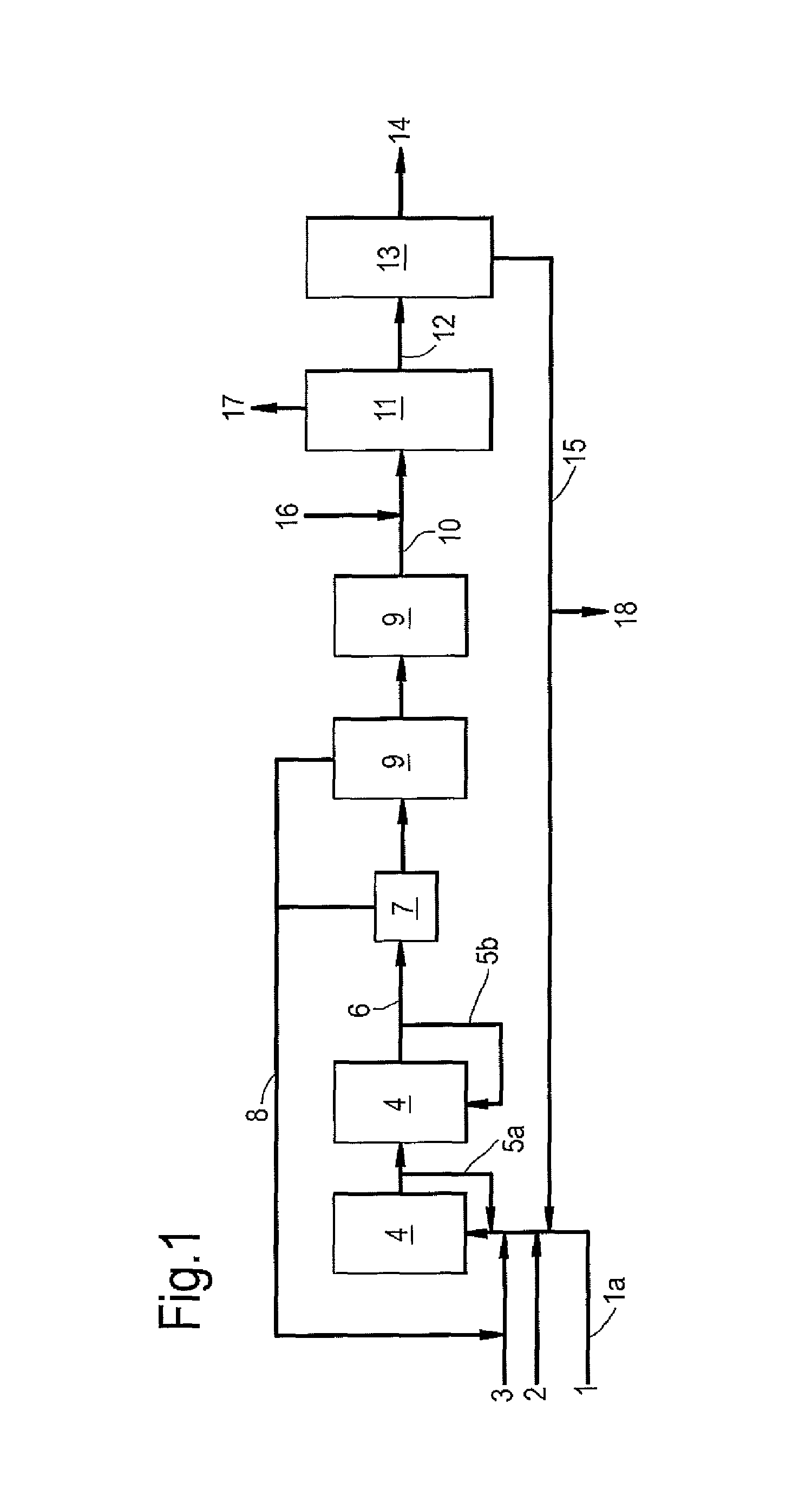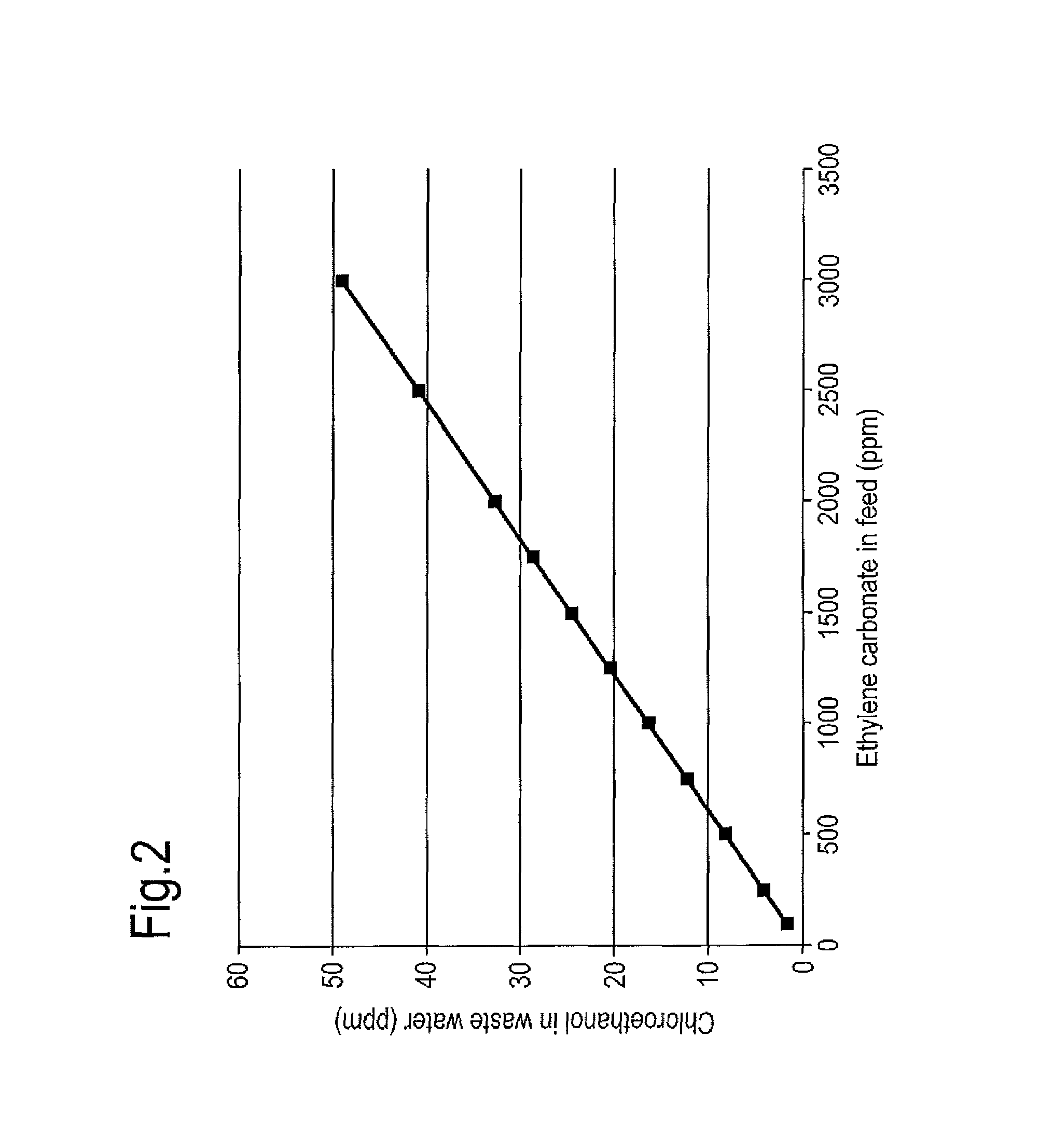Process for the preparation of ethylene glycol
a technology of ethylene glycol and ethylene glycol, which is applied in the preparation of oxygen-containing compounds, organic chemistry, chemistry apparatus and processes, etc., can solve the problems of organic chloride contaminants in the ethylene oxide product stream, chloride stress corrosion, and build-up of inorganic chloride, so as to reduce or remove the need for catalyst bleed
- Summary
- Abstract
- Description
- Claims
- Application Information
AI Technical Summary
Benefits of technology
Problems solved by technology
Method used
Image
Examples
examples
[0059]The invention is further illustrated by means of the following non-limiting examples.
[0060]Experiments were carried out using apparatus substantially as shown in FIG. 1. The reaction in the hydrolysis reactors (9) was controlled such that the first ethylene glycol stream (10) contained ethylene carbonate at the levels given in Table 1 below. Table 1 also shows the level of inorganic chloride contaminants in the first ethylene glycol stream, the total feed to the dehydrator (11), the waste water flow (17) and the amount of chloroethanol in the waste water stream (17):
[0061]
TABLE 1WasteChloro-EthyleneChlorideTotalwaterethanol incarbonate inions in feedfeedflowwaste waterfeed (ppm)(ppm)(g / h)(g / h)(ppm)Example 190094311512.614.9Example 2460149112511.48.4Example 32990160812312.249.8
[0062]In these examples the ethylene carbonate reacted in the dehydrator to produce ethylene oxide, which further reacted with chloride ions, leading to chloroethanol in the waste water.
[0063]This experim...
PUM
| Property | Measurement | Unit |
|---|---|---|
| Fraction | aaaaa | aaaaa |
| Fraction | aaaaa | aaaaa |
| Fraction | aaaaa | aaaaa |
Abstract
Description
Claims
Application Information
 Login to View More
Login to View More - R&D
- Intellectual Property
- Life Sciences
- Materials
- Tech Scout
- Unparalleled Data Quality
- Higher Quality Content
- 60% Fewer Hallucinations
Browse by: Latest US Patents, China's latest patents, Technical Efficacy Thesaurus, Application Domain, Technology Topic, Popular Technical Reports.
© 2025 PatSnap. All rights reserved.Legal|Privacy policy|Modern Slavery Act Transparency Statement|Sitemap|About US| Contact US: help@patsnap.com


